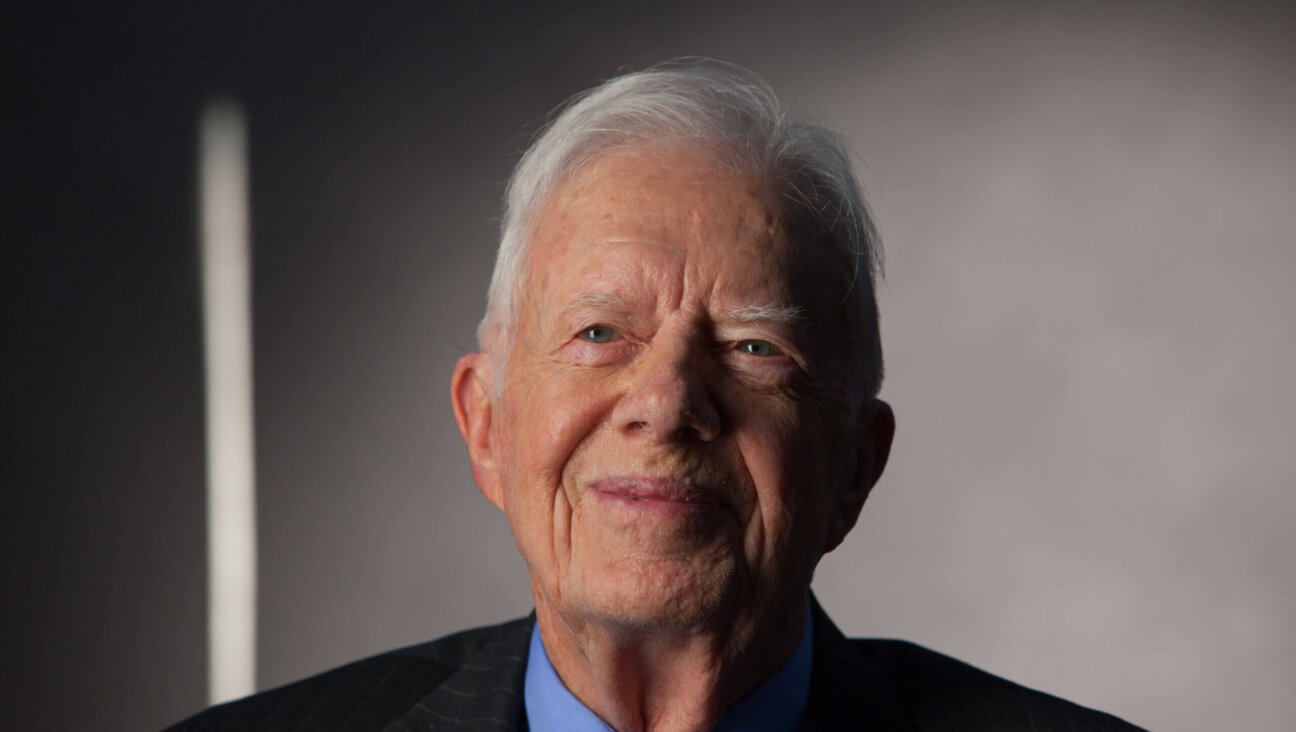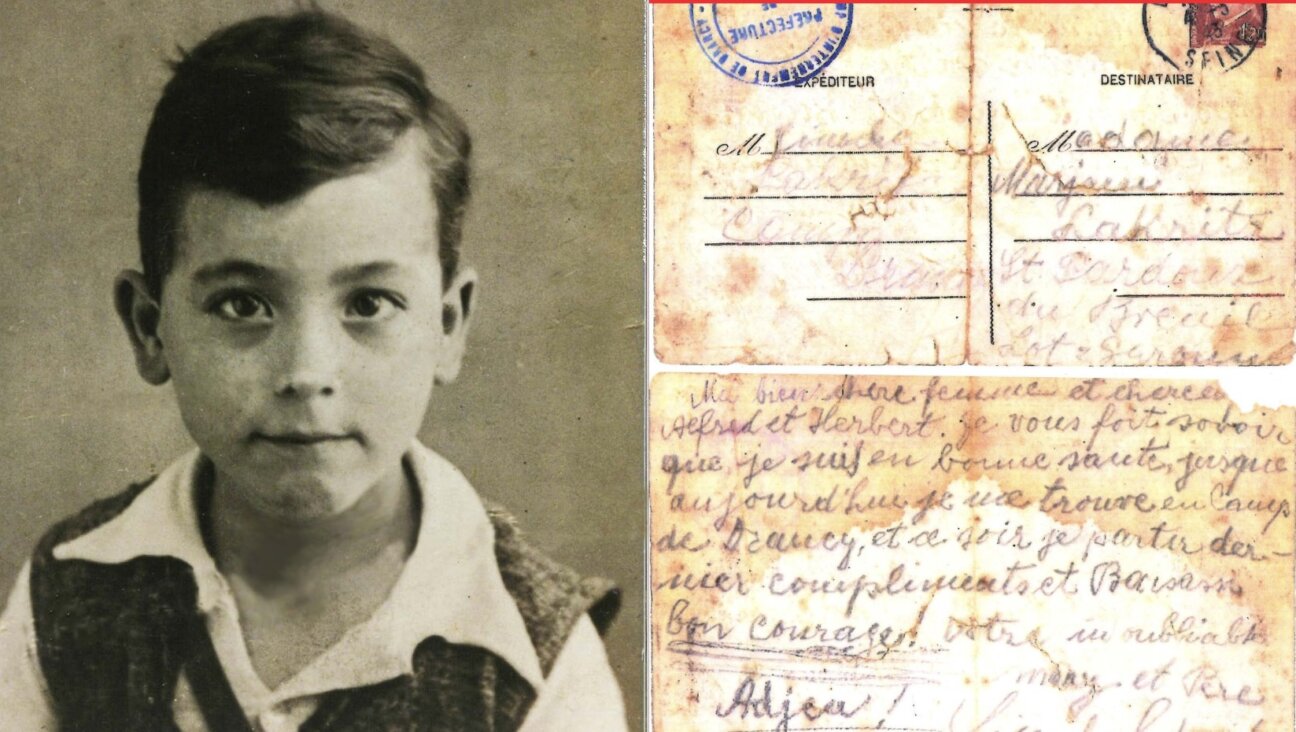Opening of Archive Slower Than Expected
BAD AROLSEN, Germany – Behind the stone walls of a rectangular building in this picturesque town, which is famous for its baroque architecture, sits the world’s biggest archive of documents, photographs, maps and correspondence pertaining to the Nazi Holocaust.
The entrance is emblazoned with a modest red cross. Inside these former SS barracks and a rustic German-style structure around the corner, there are more than 50 million written records of 18 million death camp victims, concentration camp inmates, political prisoners and slave laborers from all over Europe.
A legal and historical treasure trove, its contents have been largely inaccessible to many if not most of the survivors for the past 50 years, ever since the archive came into the possession of the International Committee of the Red Cross. Known as the International Tracing Service and directed until the end of last month by Charles Biedermann, a stern Swiss bureaucrat, the archive was also off limits to researchers, journalists and the general public. But after prolonged protests spearheaded by the United States, and a subsequent conference in Luxembourg of the tracing service’s 11 governing nations, it was announced that many of the restrictions would be lifted.
The announcement led many observers to assume that access was finally being granted to bona fide scholars, and that personal requests for documents made by wartime slave laborers who are eager for compensation would be processed promptly. Newspaper headlines, however, often do not reflect reality, and they certainly did not in this instance.
The center’s interim director, Toni Pfanner, explained that the participating nations in the Luxembourg conference merely agreed in principle to amend the treaty. He pointed out that the amendment must be ratified by each of the 11 governments responsible for the center, a procedure that is almost complete, but taking longer than expected.
Italy and Belgium are among the countries that have expressed reservations. They do not want information about suspected collaborators and informers to be made available. Germany, which covers the tracing service’s budget, has strict privacy laws and therefore opposes the release of documents that could incriminate its citizens.
Israel, which is one of the governing countries, shares Germany’s anxiety over evidence that could implicate Jewish survivors known as “Kapos,” who served as policemen in concentration camps. Some of them may be suspected of having killed other Jews by order of their Nazi captors. In the past, Israel has conducted trials of these self-tormented and embittered individuals — only to incur its public’s disgust.
With such issues still unsettled, things are moving slower than planned.
“There was supposed to be a signing ceremony, July 26,” Pfanner said. “But it has been delayed.”
Pfanner also said that the digitalization process demanded by America and by the United States Holocaust Memorial Museum in Washington would take a year or longer. Computer experts believe that 1,000 employees working full time would be necessary to get the job done in that time frame — but only 400 people work at the Bad Arolsen facility.
Despite these complications, most of the records of Jewish victims already can be found at the Yad Vashem Holocaust Memorial Authority in Jerusalem. The head of Yad Vashem’s enormous archive, Yaacov Lazowick, attributed this to the presence of an Israeli foreign ministry representative in Bad Arolsen from the mid 1950s until 1965.
As a result, 20 million documents pertaining to Jews, relevant historical records, and the central index were microfilmed and sent to Israel.
“Every incoming document was indexed on the basis of the name it mentions, the dates and treatment (expulsion, etc.),” he said. “That tells me everything.”
According to Lazowick, the material transferred deals with “98%” of the Jews about whom the tracing center has records. There was no explanation about the material withheld. “As far as Yad Vashem is concerned, the Jewish aspect was taken care of in 1958,” Lazowick said. “Since that date, the proportion of its material that deals with Jews [compared with the overall documentary coverage of other nationalities] is small.”
The people who were arguably most hurt by the restrictive policies have been non-Jews who were forced to work as slave laborers during World War II. Because of red tape, insufficient staff, and the flood of appeals for biographical data that began with the downfall of the Soviet Union and the transformation of its Eastern European satellites into independent states, hundreds of thousands of Poles, Czechs, Ukrainians and other European nationals have little or no chance of receiving monetary compensation for the work they did as slave laborers in Nazi Germany during World War II.
To qualify for reparations, the slave laborers are required to provide ample proof of the hardships they endured as industrial workers, miners and servants for salaries as low as $8 per month.
The diabolical irony of the Nazi-forced labor regime is epitomized in an “Arbeitsbuch,” or work booklet for foreigners, thousands of which have been collected by the tracing service. One of them contains the registration number of Petro Schwarz, along with his photograph and date of birth: January 21, 1925. The impeccable text is in the German language’s Old Gothic script. It includes Schwarz’s home address in Poland, gives the location of his employment as Silesia (then part of Germany, but annexed by Poland after the war) and lists his job as a coal miner.
There are rows upon rows of social security payment stamps on the inside pages, each one emblazoned with the Nazi swastika and all of them pasted with perfect precision.
It looks as if Schwarz’s employers wanted the economic and social injustice from which they benefited to look quite orderly and normal.
American and Allied soldiers were the main collectors of this vast store of documentation, in the war’s final months and in its immediate aftermath. They were ordered to collect all the files stashed away by the Nazi SS in their death and concentration camp archives.
According to the center’s dedicated archivist Manfred Kesting, a German national who has been working there since 1985, the Allied authorities in the former American, British and French zones of occupied Germany also ordered “all Germans to report all foreigners” who were in their country during the war. Later, the Soviet Union transferred copies of its Nazi documents, by which time the center had been placed under the exclusive direction of the International Committee of the Red Cross.
But until the center’s 50 million documents are digitized, a snail’s-pace process underway since 1998, it will remain technically impossible to make them available to the survivors who need them. According to Pfanner, who arrived at this rustic-looking facility about a month ago, there is a backlog of 320,000 requests.
At least two of the center’s restrictions are expected to be maintained: The data will not be made available on the Internet, and the general public will not be admitted to the facilities.
“The main consideration is the economic one; the Germans do not want the information available to all comers,” said Moshe Zimmerman, a specialist in modern German history. “They do not want unauthorized persons to have access to the material.”
A message from our Publisher & CEO Rachel Fishman Feddersen

I hope you appreciated this article. Before you go, I’d like to ask you to please support the Forward’s award-winning, nonprofit journalism so that we can be prepared for whatever news 2025 brings.
At a time when other newsrooms are closing or cutting back, the Forward has removed its paywall and invested additional resources to report on the ground from Israel and around the U.S. on the impact of the war, rising antisemitism and polarized discourse.
Readers like you make it all possible. Support our work by becoming a Forward Member and connect with our journalism and your community.
— Rachel Fishman Feddersen, Publisher and CEO























